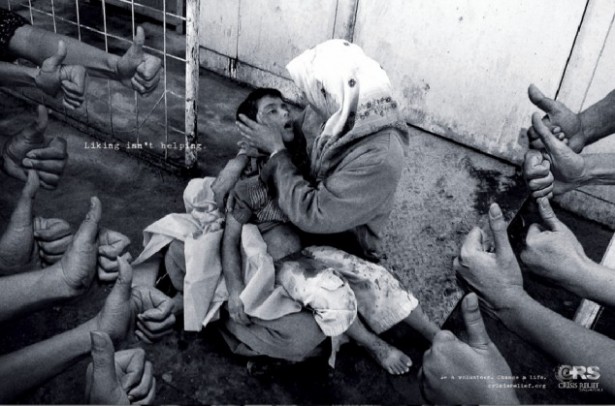Every morning at 9:15 a reminder sounds on my phone:
“Stop. Take 30 seconds. Why are you here?”
By this time, I am caffeinated and rattling off 140 character bites to supporters and haters (motivators). I pause and think of the day ahead: tweets, comments, and Instagrams all purposely crafted to mobilize global citizens to bring a permanent end to LRA atrocities.
Last week my reflection was interrupted as an ambulance whirred outside my office on National Avenue. It occurred to me then that today, too, was an emergency. As I write this 438,504 people (with dreams and love stories and favorite songs on the radio) are displaced because of LRA violence. And as you read this, Joseph Kony and his top commanders are reigning unpunished for the death of 102,000 people and the kidnapping of 60,000 children to be used as machines for war and objects for sex.
And so I tweet.
It sounds so shiny and modern, doesn’t it? End a war in 140 characters. It sounds self-gratifying, too.
A recent critic pushed @Invisible, “Please tell me more about how a YouTube video changed the horrors in Uganda. #smh”
Comments like these have become dull with redundancy. Even trendier than clicktivism (utilizing social media for social change) is the criticism of it. The recent award-winning photo series “Liking Isn’t Helping” depicts the cynic’s sentiment well: activism is an embarrassing caricature of what it once was.

In school, I was presented with a different image of activism that remains salient to me today.

On February 1, 1960, the A&T Four, defiantly sat at a lunch counter in North Carolina that “abided by local custom” and refused service to black patrons. Days later, the A&T Four were three hundred strong, and their resolve spurned sit-ins at counters across the segregated south.
It could be argued that this demonstration yielded incidental results: lunch for African-Americans. But we would call that conclusion myopic. With the privilege of hindsight, we teach our children today that these sit-ins played a critical role in shifting the conscious of Americans and their legislators.
But what did the A&T Four really do? They hijacked a popular gathering place — a place where they would be seen. And 53 years later we have decided to gather on the Internet. We have made Facebook the third most populated “country” in the world. Modern-day activists take their conversations online because social media is the new water cooler.
Contrary to popular criticism, clicktivists know that their status update does not translate into peace 1:1. They believe, rather, that an unrelenting commitment to conversation (whether though comments, replies, retweets, or shares) is a place to start.
Because of a hashtag and a YouTube video, the KONY 2012 Resolution was unanimously passed through Congress, the Department of Defense allocated $45 million to counter-LRA efforts, and 100 U.S. advisory troops continued to support the hunt for Joseph Kony.
The world’s social ills do not deserve to be “liked” and forgotten, however. IJM founder, Gary Haugen articulates our obligation well when he says, “The victims of injustice in our world do not need our spasms of passion; they need our long obedience in the same direction – our legs and lungs of endurance; and we need steady stores of joy.”
And I believe that one effective platform, of many, to express this passion is the social space– a place where people gather to converse, collaborate, and commune. Even so, cynics will call this method too easy, a pernicious side-effect of an instant-gratification-generation. Cynics will call the clicktivist lazy.
But there is one thing I know with absolute certainty: cynicism is lazier than clicktivism.
Right now we are at a tipping point in the counter-LRA mission. Major progress has been made, and LRA killings have decreased by 93% in the last two years. But now, some of our leaders think that we have done enough and want to walk away. But good enough has never been enough. We have just two weeks to tell our leaders that we want to live in a #zeroLRA world. Tweet, call, mail. Use your voice, and see for yourself if “liking” is helping.
Think people should hear about this?